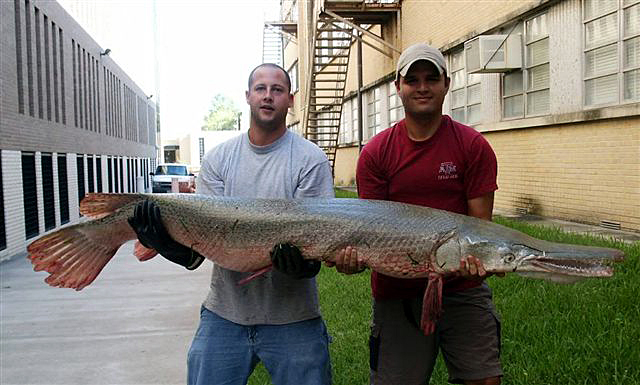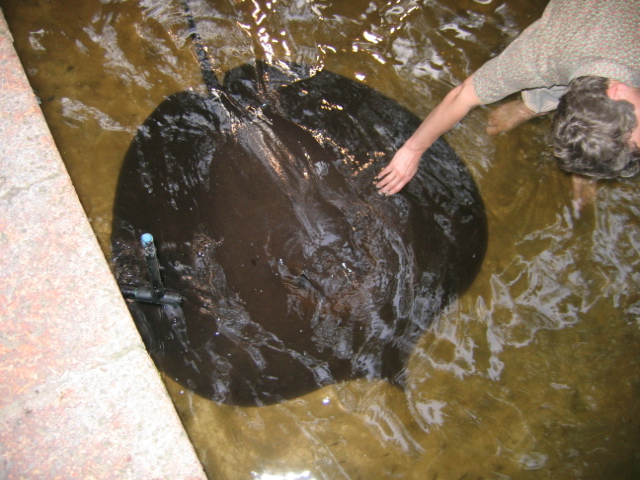Fans of Jeremy Wade’s “River Monsters” know that monsters are real and, with a little skill and hard work, can be caught. Catching a monster fish can be a ticket to fame. The New Zealand Sport Fishing Council recently stated that the biggest fish ever caught and recorded by a female angler was a 907-pound bluefin tuna caught by Donna Pascoe this year, and the sport fishing world has exploded with interest. While many freshwater monsters are currently over-fished, there are still places for the adventurous angler to seek a unique and jaw-dropping trophy for themselves.
Alligator Gar- Trinity River, Texas
The Alligator Gar is known for its long, alligator-like snout and double rows of imposing teeth. The largest freshwater fish in North America, the Alligator Gar can reach 6 feet in length, weigh up to 200 pounds and can trace its origins to the Cretaceous period. Once considered an invasive nuisance, Alligator Gar were targeted by many state and federal game and fish authorities in the United states for elimination, which has dwindled their habitats to rivers in the southern states.

Photo by Clinton & CHarles Robertson via Wikimedia Commons
To catch these monsters, you’ll need a restricted license and a boat that can stride the stump-laden and Amazon-like banks of the Trinity river, as well as a lot of time to explore. The Texas State Historical Association reports that the Trinity River is the longest river with its whole course contained within Texas and stretches 423 miles from the crux of the West and Elm forks to the coast.
Hucho Taimen- Delger Muron River, Mongolia
Taimen are the largest members of the salmon family, a fierce predator known to snatch waterfowl right off the surface of the water. According to National Geographic, Taimen are capable of growing more than six feet in length and weighing up to 200 pounds. Due to the fragile nature of the Taimen’s continued existence, adventurous anglers must practice catch-and-release fishing and use barbless hooks so this monolithic river fish might survive as a species.

Photo by Ojensen via Wikimedia Commons
If you’re looking to catch the largest salmon in the world, you’ll need to travel overland through Mongolia to the Eg-Ur Basin, which is no easy task in of itself. A wise traveler would plan to bring camping gear as well as a satellite phone if they plan on keeping any contact with the outside world during the long trek.
Giant Freshwater Stingray- Mae Klong River, Thailand
Found through many rivers in Southeast Asia, the Giant Freshwater Stingray can grow to a terrifying 1,000 pounds and measure almost 15 feet in width. Armed with a tail that carries a serrated spike that is often more than afoot long, the Giant Freshwater Stingray is seen as a bringer of bad luck by many locals. Catching one is a tremendous challenge— these giants tend to bury themselves in mud when hooked and can sink riverboats by just pulling a line. Another endangered giant, sport anglers should respect its status and practice catch-and-release fishing, especially as many locals kill the stingray regardless of whether or not it is going to be used for food.

Photo by Barry Rogge via Wikimedia Commons
The Mae Klong river can be reached by road when driving out of Bangkok. The adventurous traveler should consider traveling through the Mae Klong Railway Market while in the area. The Railway Market is built just inches from a railway that the government built right through the center of it, and local vendors sell scores of unique local seafood. They might even have some tips for the visiting fisherman.
